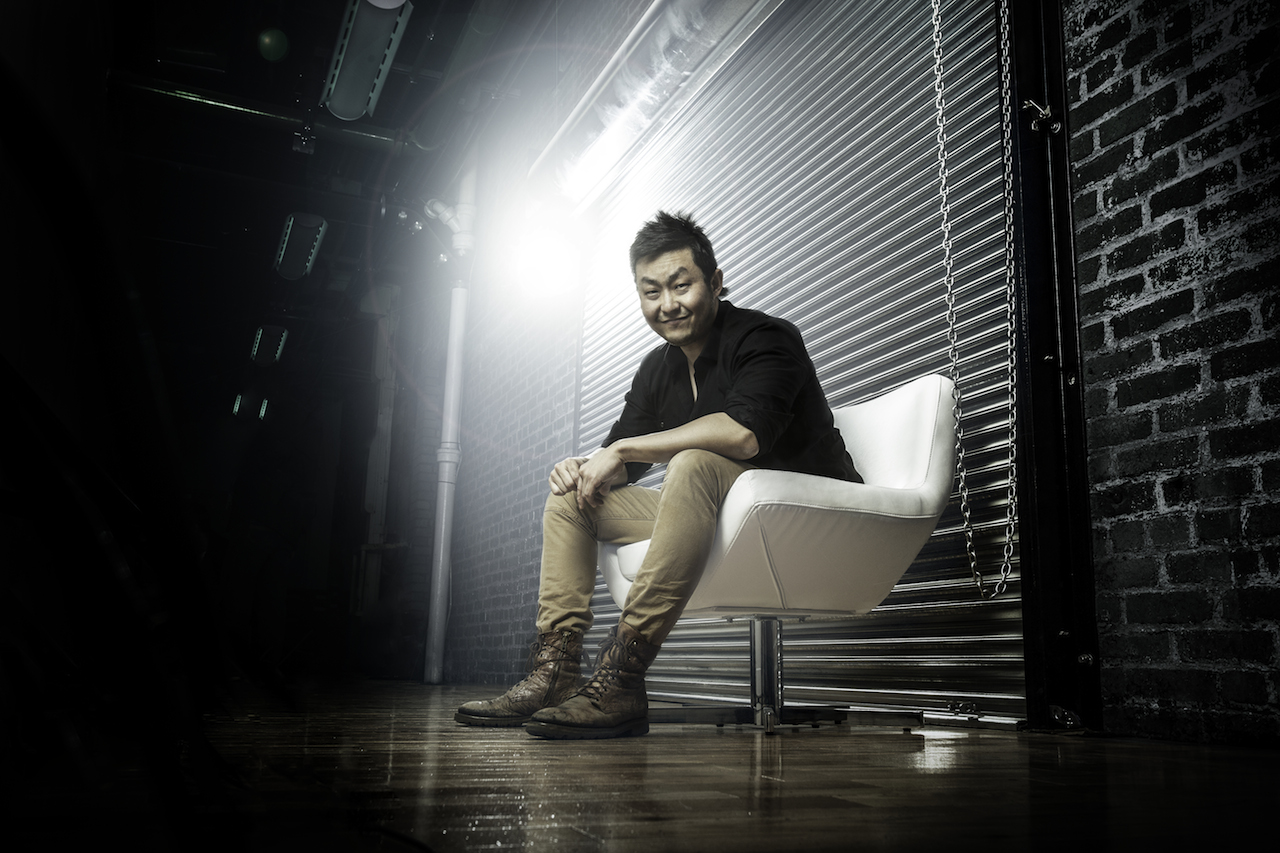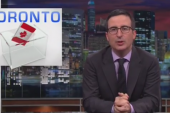
Scott Lee knows something about character.
Whether its helping breathe life into characters like Splinter Cell’s Sam Fisher, or finding the perfect addition to Ubisoft Toronto‘s art team, he is always making character evaluations. We spoke to him during the company’s Ubi Gallery event last week where he told us what he looks for in an artist, the most challenging of his job and what he loves about Toronto.
In four sentences or less, tell us who you are and what you do for a living.
My name is Scott Lee. I’m the senior art director at Ubisoft Toronto. I was the primary art director on Splinter Cell: Blacklist, which is the last game we shipped.
You’ve had a bit of a convoluted path getting into this industry. Can you talk about that?
I used to be a comic book artist back in the 90s. This is when comic books were really popular—and bad at the same time. I worked for DC and Marvel, and then I stumbled upon videogames and jumped in as a concept artist. It was something I wanted to try while experiencing a slow summer at work.
What studio did you join?
I started with Radical Entertainment in Vancouver.
I planned on staying for six weeks or so, but I ended up loving the job and Radical offered me a role as an art director—which is strange, and something like that doesn’t happen anymore. Anyway, I accepted and slowly abandoned comic books for video games.
What inspired you to try and enter into the comic book industry initially?
I wish it was a more of a romantic story than it really is.
I loved drawing and reading comic books when I was younger, but I lost touch with them when I entered high school—you know, in high school you start to think about girls, sports and other stuff.
I then started to collect comics once more when Image Comics launched. I thought their work was amazing, and, with all my boyhood bravado, I thought I could be a comic book artist, too. So I gave it a shot. Luckily I got work with DC right away.
At what point did you join Ubisoft?
I joined Ubisoft in September of 2010. Basically, I flew in the day before the studio’s launch party. I obviously interviewed before that, but, by the time I got to Toronto, I stumbled into the party and got to meet everyone I was about to start working with.
For me, it was a big opportunity to help hire all the artists for that would make up the studio’s art team.
What do you look for in an artist you’re about to hire?
You can’t get an interview here unless you’re talented, so I’ll bypass the entire talent part; everyone that works in this industry is talented.
I look for ambition and somebody I know will be a good team player. I want to see ambition in their portfolios, and I want to see them reach and try to do stuff that’s better than what anyone else is doing. They’ve all gone to good schools and seen what their peers can do, so I need to see them take that extra step. Finally, I want to see them choosing projects that challenge them.
That’s what marks a professional against someone that’s just trying.
Beyond that, the people I look for have to be team players. We’re like a family here. We spend a lot of time working together, and we spend social time together as well. It’s not like other jobs in that sense; the people that work here really need to be a part of the culture.
I feel like that’s not asking for a while lot; most people would be glad to come into a situation like that. And for those that we do hire, we embrace them like family.
Is there a theme or preoccupation that has come to define your work?
My obsession is realism and level of detail. I’m all about beating everyone else at those two things.
What’s the most challenging part of your job? What’s the most rewarding?
They’re one in the same: motivating the team.
My job is to envision what the game is going to look like and what it needs to feel like. I obviously work with designers in regard to that, but to me, my goal is to help sell that vision. And to do that I need the art team to buy into the vision. It needs to become their vision. That vision strengthens and grows with each and every person that contributes to it.
For me, it’s difficult to have a team in the hundreds like we have at Ubisoft and have them all sync, doing the same thing.
On the flip side, when we do achieve that, it’s kinda magical. Splinter Cell turned out like that; everyone really believed in the vision, and everyone contributing to it made the final product greater than the sum of its parts. That’s what you need to make a special game.
Game making is a very collaborative experience. At the same time, creating art is always a personal experience. Was there a moment in Splinter Cell where you had to make the decision to sacrifice something personal to make the final product better?
That’s everything.
To me, character design is very important. I come from a comic book background where creating iconic characters was the essence of my job.
When we start creating a character design here, it begins with the seed of an idea that quickly grows and skews as more people contribute to it. With Blacklist, our vision of Sam Fisher (the game’s protagonist) had to be married to an adherence to the history of a franchise like Splinter Cell.
I think that was difficult to do, but what came out was, in the end, a lot better than what would have come out had it just come from my hands.
For artists looking to get into the industry, talent, as you said, isn’t enough, so what advice would you give them?
Like I said, I think you need to be ambitious. And I mean ambitious right off the bat with your portfolio. For instance, I’ve compared projects where one modeller had a really nice grouping of objects, but then another person—the one we end up hiring—has a similarly well done set of objects but they’re set in a cathedral. They’ve even gone and built and lit everything in that cathedral.
We need to see the passion and we need to see the commitment. It’s not not so much that I demand more of the artist, but that we want to see someone who takes their work so personally that they always want to get better.
Ultimately, any young artist is nowhere near where they will be. Ambition and passion, those are things that are going to make you better, and that’s what potential is all about.
By estimation you’ve lived in this city for four years. What have you come to love about it?
Oh, definitely the nightlife.
I’m from Vancouver, and they go to sleep there really early.
Here, we stay up late a lot. I would say Toronto is the great urban centre that Canada has always needed. City life in Toronto is second to none, especially when it comes to the rest of Canada.
Outside of your work, what are some of the things that motivate and inspire you?
I enjoy the pursuit of all the arts.
I love art galleries, museums, books, movies and TV. I consume them all in huge quantities, and I’d say they’re what drive me; that’s something I find that in most creative people.
I’m always looking for inspiration and for new ideas, because you never know where you’re going to get it from. I feel like there’s never enough time to read enough books, or enjoy enough art.
What’s next for you personally and professionally?
Something I can’t mention (laughs).
There are exciting new projects here—some announced, some unannounced—and obviously I’m working on one or more of those things.
It’s an exciting time for us. It’s rare to be any company where your options are great, greater and greatest. And that’s why I think Toronto is fortunate to have a company like Ubisoft.
Photo courtesy of Michel Cloutier.
This interview has been edited and condensed.
Is there a creative Torontonian you would like to see profiled? Email Igor Bonifacic at igor[at]torontostandard[dot com] to nominate someone.
___
Igor Bonifacic is the managing editor of Toronto Standard. Follow him on Twitter.
For more, follow us on Twitter and subscribe to our newsletter.













